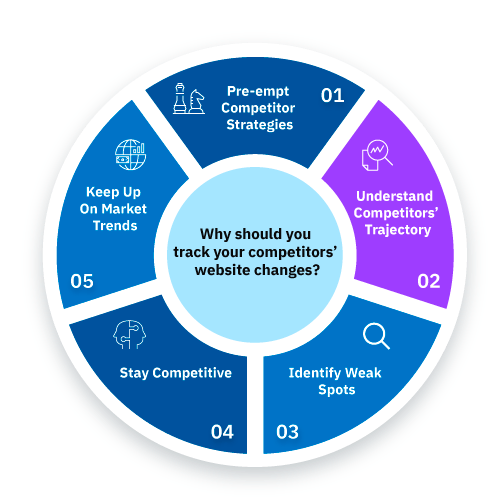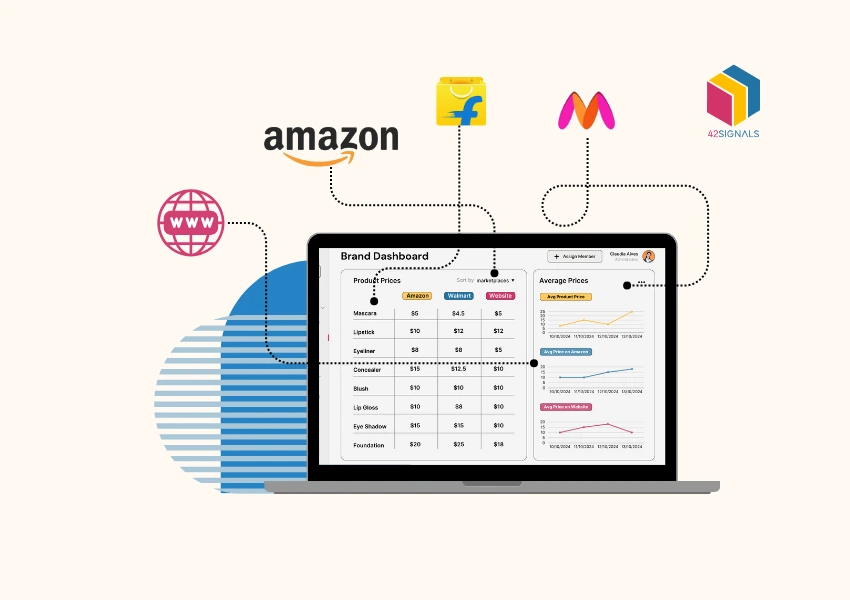Whether you’re running a small business or a large corporation, understanding what your competitors are doing can be the difference between merely surviving and thriving. Competitor tracking provides invaluable insights into market trends, pricing strategies, customer preferences, and much more.
Let’s understand why it’s essential to making money and how it can influence crucial aspects like inventory management, product availability, and handling out-of-stock items.
How to Analyze Market Trends and Customer Behavior?

Image Source: Question Pro
One of the primary reasons to track competitors is to gain insights into market trends. By analyzing what your competitors are doing, you can identify emerging trends and shifts in customer behavior. For instance, if a competitor suddenly sees a spike in sales after introducing a new product line, it could indicate a growing demand for that type of product.
By recognizing this trend early, you can adapt your strategy accordingly—perhaps by introducing a similar product or enhancing your current offerings.
Tracking competitors also helps you understand customer behavior. For example, by monitoring the reviews and feedback that competitors receive, you can identify what customers like and dislike about their products. This information can guide you in improving your own products or services, helping you meet customer expectations more effectively.

Image Source: Contify
Understanding your competitors’ customer base can help you target new customers or retain existing ones by offering something they can’t find elsewhere.
Optimizing Pricing Strategies
Competitor tracking is vital when it comes to pricing strategies. In the digital age, customers are highly price-sensitive and can easily compare prices online. If your prices are significantly higher than those of your competitors, you might lose potential customers.
Conversely, if your prices are too low, you risk undervaluing your products or services and reducing your profit margins.

Image Source: Top Retail Pricing Strategies
By keeping an eye on competitors’ pricing strategies, you can find a balance between competitive pricing and profitability.
For instance, if you notice that a competitor is offering a discount on a popular product, you might consider running a similar promotion or highlighting the unique value of your product to justify a higher price. Tracking competitors’ pricing also helps in adjusting your pricing in real time, ensuring that you remain competitive without sacrificing profits.
Enhancing Inventory Management
Inventory management is a critical aspect of any business that deals with physical products. Poor inventory management can lead to out-of-stock items, excess stock, and ultimately, lost sales and increased costs. Competitor tracking can play a significant role in optimizing your inventory management processes.
By monitoring your competitors, you can gain insights into their inventory levels and product availability. For example, if a competitor frequently has out-of-stock items, it could indicate high demand for those products. This information can help you adjust your inventory levels to meet potential spikes in demand, ensuring that you don’t miss out on sales due to stockouts.
On the other hand, if competitors have excess stock of certain items, it might be a signal that demand is declining. This insight can help you avoid overstocking those items, reducing the risk of having unsold inventory.
By tracking competitors’ inventory practices, you can identify trends in product lifecycle management and adjust your inventory accordingly, ensuring that you always have the right products available at the right time.
Improving Product Availability
Product availability is directly linked to customer satisfaction and sales. Customers expect to find the products they want when they want them, and if you can’t meet this expectation, they will likely turn to your competitors. Tracking competitors can help you improve your product availability by providing insights into their supply chain and inventory practices.
For instance, if a competitor consistently has products in stock that you struggle to keep available, it might be worth investigating their supply chain strategies. Perhaps they have a more reliable supplier, a more efficient logistics system, or better demand forecasting techniques.

By understanding what they are doing right, you can adopt similar strategies to improve your own product availability.
Tracking competitors’ product launches and availability can help you anticipate market demand and prepare accordingly. If a competitor is about to launch a new product that is expected to be popular, you can ensure that your inventory is stocked with complementary products or similar alternatives, positioning yourself to capture some of that demand.
Responding to Out-of-Stock Items
Out-of-stock items are a significant challenge for any business. When customers can’t find what they’re looking for, they often turn to competitors, leading to lost sales and potentially lost customers. Tracking competitors can help you manage out-of-stock situations more effectively.
By monitoring competitors’ stock levels, you can identify opportunities to capitalize on their out-of-stock items. For example, if a competitor runs out of a popular product, you can increase your marketing efforts to attract customers who are unable to purchase the item from the competitor.
If you notice that a competitor frequently has out-of-stock items, it could indicate issues in their supply chain or inventory management. You can use this information to ensure that your supply chain is robust and that you’re less likely to face similar issues.
Tracking competitors’ responses to out-of-stock situations can provide valuable lessons. How do they communicate with customers when a product is out of stock? Do they offer alternatives or incentives to keep customers engaged?
By learning from their strategies, you can develop your own approach to managing out-of-stock items, minimizing customer dissatisfaction and lost sales.
Identifying Gaps in the Market
Competitor tracking is also crucial for identifying gaps in the market—areas where customer needs are not being fully met. By analyzing your competitors’ offerings, you can identify products or services that are in high demand but are not adequately supplied.
This could be due to competitors’ stock limitations, product unavailability, or simply because they have overlooked certain customer segments.
Once you identify these gaps, you can develop strategies to fill them, whether by introducing new products, improving existing ones, or targeting underserved customer segments. This proactive approach not only helps you attract new customers but also strengthens your market position by addressing unmet needs.
Conclusion
Whether it’s understanding market trends, optimizing pricing strategies, enhancing inventory management, or improving product availability, competitor tracking provides the insights needed to make strategic decisions that boost profitability. By keeping a close eye on what your competitors are doing, you can anticipate changes in the market, respond quickly to challenges, and seize opportunities that others might miss.
Competitor tracking helps you avoid costly mistakes and learn from other’s successes, giving you a distinct advantage in a crowded marketplace.If you are curious to know what competitor data can do for your brand, schedule a demo with us. Our customized solutions provide answers to your questions about the market, category, and industry.







